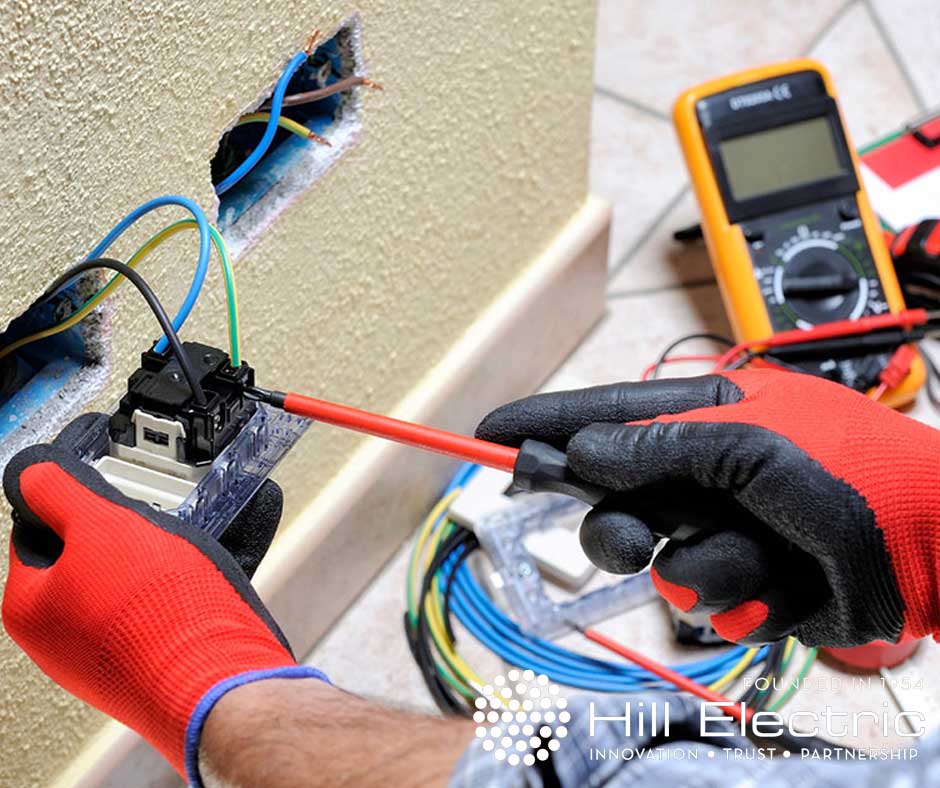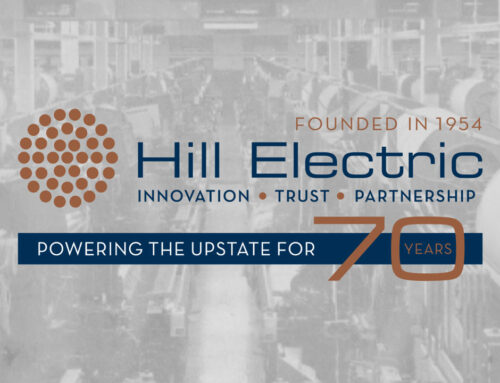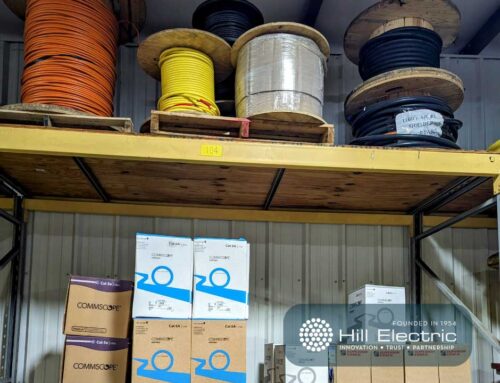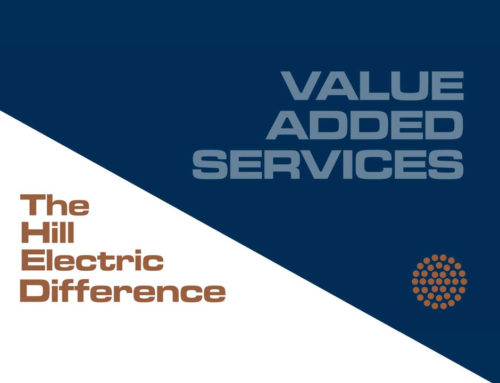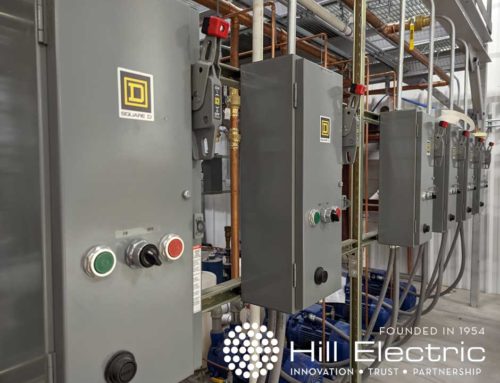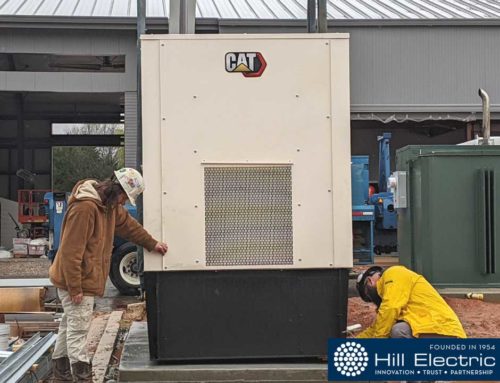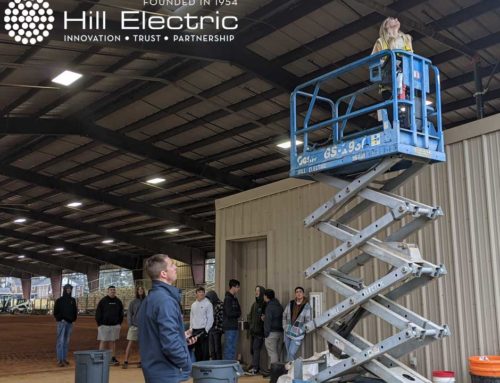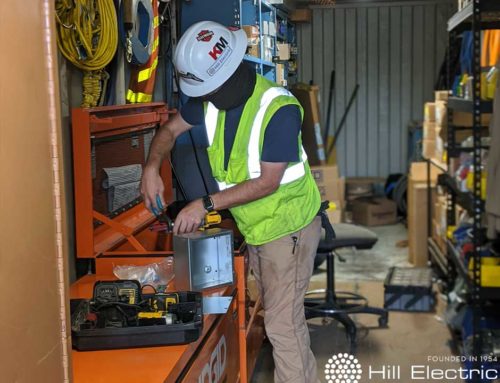When it comes to safety, there are a lot of tips out there designed to help keep people safe. At Hill Electric, when we go into any new situation, we have a system of checkpoints to ensure that we are continuously focused on safety for all—not just ourselves.
When it comes to the home, safety can sometimes take a backseat for household projects—something that can have significant ramifications if something goes wrong. Here, we’ve combined our top safety tips from our everyday practices in the industrial electric industry, and translated them for personal use—whether doing a DIY project at home, or simply working around the office.
Why is safety so important for home projects?
That latest DIY project may seem pretty straightforward, but the fact is that home-based projects aren’t as cut-and-dry as they seem. In fact, according to statistics from the National Safety Council, “23.8 million preventable injuries occurred in homes in 2016, and most of these were caused by the injured party’s own mistakes.” In order for your next DIY to avoid turning into a trip to the ER, there are a few tips you can use—straight from professionals who understand safety.
The Fatal 4, and how you can adapt them for your home
According to OSHA (the Occupational Safety and Health Administration), the top four most common (and fatal!) instances in the workplaces are falls (which account for almost 37 percent of all work-related deaths), getting struck by an object (around 10 percent); electrocution (around 8.6 percent), and getting caught in or between something (around 2.5 percent). While these numbers are directly related to workplace safety, they are also very important to focus on in home- or office-based projects, as well. Here’s how to adapt your personal safety according to these major safety challenges.
“The first thing you need to change in any project is your mindset,” said David Wolke, Director Labor & Safety. “You need to go into the project from the beginning evaluating all the potential risks and how to avoid them. A lot of safety is in the planning and thinking of how you’re going to be able to physically do it.”
Slips, Trips and Falls
While slips, trips or falls are the #1 fatality in the workplace, it’s also the number one hazard at home, too. Fortunately, while a professional might have to consider harnesses and crane height, a DIY-er need only consider things like stairs or ladders. Here are Wolke’s top tips to avoid a bad spill:
· Hold on to hand rails, where available.
· Clean pathways of clutter.
· Avoid wet surfaces or floors around your workspace.
· Ensure ladders are secure on the ground, and that you have a three-point contact between your body and the ladder at all times.
Struck by Object
Getting struck by a falling object may seem like something you’d only need to consider in a large warehouse, the reality is that falling objects happen at home, as well. So whether you’re installing a new light fixture or just cleaning out the garage, make sure you pay attention to the following tips:
· Watch out for shifting materials above you.
· Be sure to wear safety glasses or goggles to prevent objects from striking you
· Be conscious about placing things down where they are secure.
· When carrying something, make sure you know your center point of gravity.
Caught in/Caught Between
While getting caught in something might be far more concerning when you consider the heavy machinery that could be around a workplace, there are plenty of areas where this translates into smaller workspaces or homes, as well. Here are a few tips to avoid getting “caught” in a bad position.
· Guard against door slams on fingers or other parts of the body.
· Think of where your body will be as you move through different situations.
· Make sure heavy objects are secured and can’t pin you against something else.
· Don’t put your hand somewhere you can’t see the movement.
Electrocutions
Electrocutions can be very dangerous, and it’s no doubt that this is something to consider for safety, no matter where you are. To prevent shocks or electrocutions at home, make sure you cover the following:
· Ensure cord ground prongs are functional.
· Cover outlets with safety covers when not in use.
· Keep an eye out for nicked or damaged electrical cords.
· Ensure light sockets have bulbs in them to avoid an open shock hazard.
· Turn off breakers whenever you are working on a project that requires any work on or around electrical connections, including appliances, lighting and more.
At Hill Electric, our goal is to provide quality and excellence along every step of your next project—even if that’s just providing you professional advice for your next home project! If you’d like to find out more, or would like your own “Behind the Scenes” tour of what we can offer your next industrial electrical project, please contact us and let us know.

